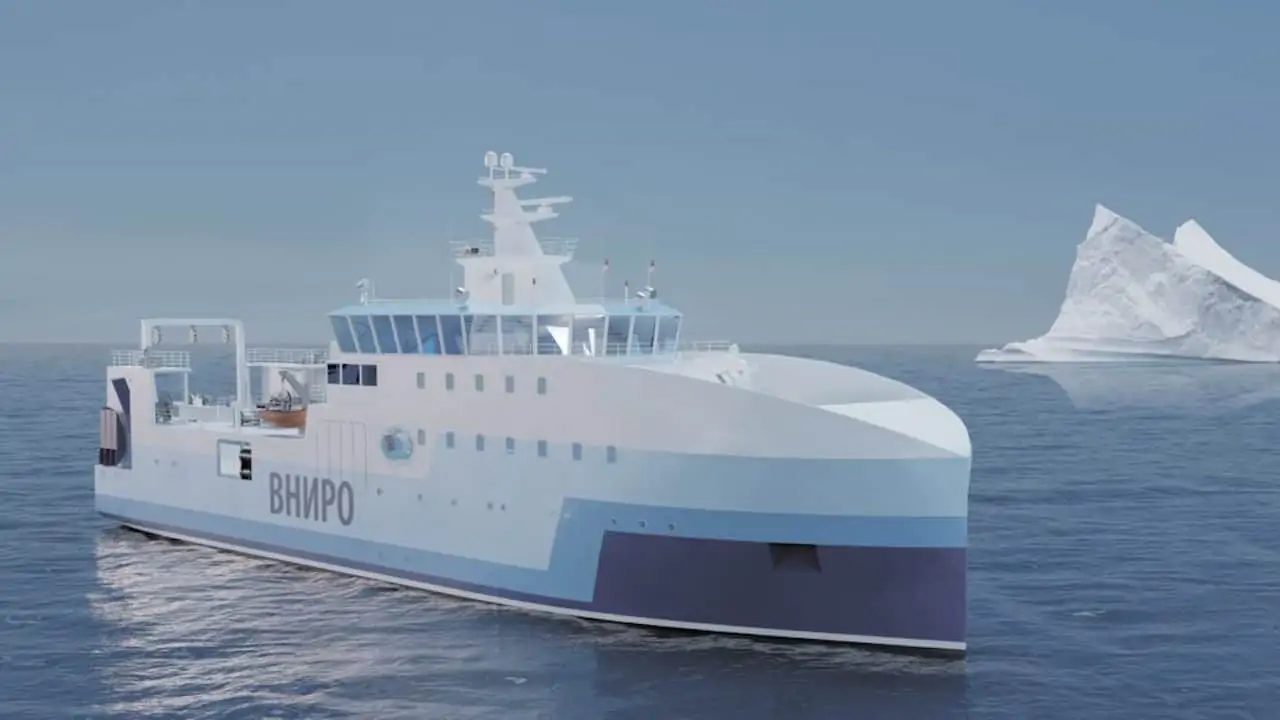Work at the Nevsky Shipyard has started on the construction of two high-tech research vessels or Russia’s Federal Agency for Fisheries.
Minister of Agriculture Dmitry Patrushev Federal Agency for Fisheries Ilya Shestakov director were at the yard for the keel-laying ceremony of the two 54 metre, 13.60 metre beam research vessels, which are predicted to become among the most advanced fisheries research vessels afloat.
RVs Professor Pyotr Moiseev and Professor Anatoly Elizarov are named after outstanding scientists who made a significant contributions to the development of Russia’s fisheries science.
According to Minister of Agriculture Dmitry Patrushev, the new vessels will become the flagships of the fishing fleet and scientific research in this area. He commented that the state will continue to support the development of scientific research, with an additional eight such modern vessels planned for the near future.
The new vessels are expected to lift research to a new level, increasing capacity to search for commercial fish stocks and aid scientific forecasting to establish fisheries limits.
‘Thanks to the decision of the President, now about a hundred fishing vessels are being built, but the fishing industry cannot exist without a scientific fleet, it cannot live without resource research,’ Ilya Shestakov said.
‘If appropriate decisions are not made on how quotas can be allocated, then the next year fishermen will not be able to go to sea. So this is a very significant event.’
The new research vessels are designed foe low-noise operation, and with a drop keel to lower instrumentation below surface noise. They will be able to carry around 26 crew and scientists, with capacity to stay at sea for a month.
The layout includes an operations centre, a hydro-acoustic laboratory, deck facilities for handling trawl gear and deploying sounding equipment vertically, wet and dry laboratories, a variety of surveying systems, and facilities for deploying ROVs, as well as chilled and refrigerated storage.
The bow section has space for two 20-foot containers, allowing non-standard laboratories to be placed on board for specific operations.





